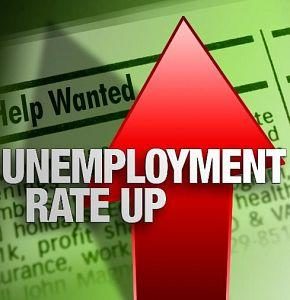
SPRINGFIELD – While the Illinois Department of Employment Security (IDES) announced today that the unemployment rate fell -0.1 percentage point to 3.4 percent, a new record low, the state is responding to a surge of unemployment claims in March due to the impacts of COVID-19. To this point, March unemployment claims total 133,763 compared to 27,493 over the same period in 2019.
In February, nonfarm payrolls were about unchanged, down -200 jobs based on preliminary data provided by the U.S. Bureau of Labor Statistics (BLS) and released by IDES. The January monthly change in payrolls was revised from the preliminary report from +16,600 to +16,000 jobs.
The state’s unemployment rate was -0.1 percentage point lower than the national unemployment rate reported for February, which was 3.5 percent, down -0.1 percentage point from the previous month. This was the second consecutive month that the state unemployment rate was lower than the national unemployment rate. The Illinois unemployment rate was down -0.9 percentage point from a year ago when it was 4.3 percent.
Statewide monthly payroll employment estimates can be subject to volatility. The three-month average Illinois payroll employment estimate, which provides a more stable measure of payroll employment change, was up +9,300 jobs during the December to February three-month period, compared to the November to January three-month period. The largest average gains were found in Trade, Transportation and Utilities (+2,400), Educational and Health Services (+2,100) and Leisure and Hospitality (+1,700).
“This administration remains dedicated to providing relief to small businesses and families during this challenging period for the state economy,” said Deputy Governor Dan Hynes. “As the state navigates this economic uncertainty, the governor will use every tool at the state’s disposal to help small businesses and families get the help they need.”
“From day one, Governor Pritzker has prioritized the needs of the state’s workforce which has resulted in a strong economic foundation,” said Erin Guthrie, Acting Director of the Department of Commerce and Economic Opportunity. “The policies and plans he has enacted and continues to support will help us through this challenging period and make way for further economic stability.”
Compared to a year ago, nonfarm payroll employment increased by +18,300 jobs with the largest gains in: Educational and Health Services (+18,300), Government (+13,300) and Financial Activities (+4,800). The industry sectors with the largest over-the-year declines were: Manufacturing (-14,500), Professional and Business Services (-11,400) and Trade, Transportation and Utilities (-600). Illinois nonfarm payrolls were up +0.3 percentage point over-the-year as compared to the nation’s +1.6 percent over-the-year gain in January.
The number of unemployed workers decreased from the prior month, -3.9 percent to 218,800, a new record low, and was down -22.2 percent over the same month for the prior year. The labor force was down -0.3 percent over-the-month and -1.1 percent over-the-year. The unemployment rate identifies those individuals who are out of work and seeking employment.
An individual who exhausts or is ineligible for benefits is still reflected in the unemployment rate if they actively seek work. IDES maintains the state’s largest job search engine, Illinois Job Link (IJL), to help connect jobseekers to employers who are hiring, which recently showed 62,951 posted resumes with 97,074 jobs available.
Seasonally Adjusted Unemployment Rates
Illinois Seasonally Adjusted Nonfarm Jobs – by Major Industry
• 2015-2019 seasonally adjusted labor force data for Illinois, and all other states, have been revised as required by the U.S. Bureau of Labor Statistics (BLS). The monthly historical revisions to state labor force estimates reflect new national benchmark controls, state working-age population controls, seasonal factors, as well as updated total nonfarm jobs and unemployment benefits claims inputs. Illinois labor force data were also smoothed to eliminate large monthly changes as a result of volatility in the monthly Census Population Survey (CPS) and national benchmarking. For these reasons, the comments and tables citing unemployment rates in previous news releases/materials may no longer be valid.
• Monthly seasonally adjusted unemployment rates for Illinois and the Chicago-Naperville-Arlington Heights Metropolitan Division are available here.
• Monthly 2011-2019 seasonally adjusted nonfarm payroll employment data for Illinois have been revised. To control for potential survey error, the estimates are benchmarked annually to universal counts derived primarily from unemployment insurance tax reports.
• Not seasonally adjusted jobs data with industry detail are available here. “Other Services” include activities in three broad categories: personal and laundry; repair and maintenance; and religious, grant making, civic and professional organizations. Seasonally adjusted data for subsectors within industries are not available.
About the Department of Employment Security
The Illinois Department of Employment Security (IDES) provides vital employment services to Illinois workers, employers, and job seekers with resources including Job Fairs and Illinois Job Link, analyzes and disseminates actionable Labor Market Information, and administers the Unemployment Insurance Program. To see the full range of services provided by IDES, and for the latest news concerning the department, visit IDES.Illinois.gov.











